How long does it take to grow weed?
Compared to previous decades, we live in a golden age for marijuana growers and users. Getting all the equipment to grow weed indoors or outdoors is easier than ever and finding all the right information is just a google search away. However, as easy as it is to get started, most growers care about one thing: how long will it take to smoke my own product?
The short answer is, it can take from two months to a year, depending on your growing style. Also, please mark the difference between plant flowering and bud preparation: In this article, we don’t just calculate the time it takes from seed to flowering. Instead, we will go through the complete timeline, including the timeframe for drying and curing.
What Influences Marijuana Growing Speed
There are quite a few factors at play when it comes to marijuana growing speed and yields. Let’s look at some of the most important ones.
Plant Genetics
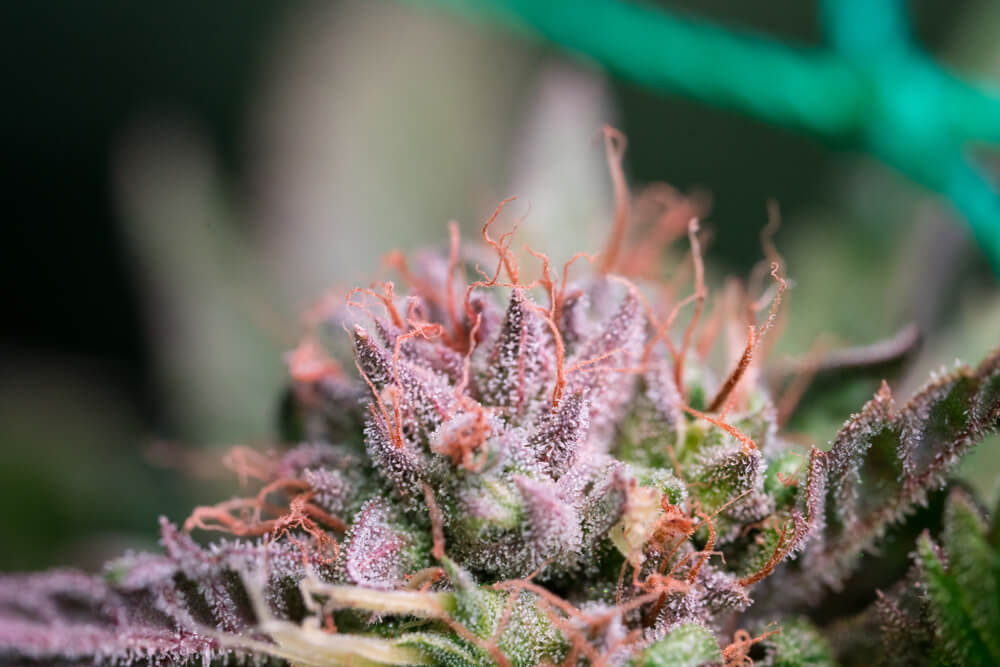
Marijuana plants can have vastly different flowering times and quirks. The most important of those depend on each plant’s genetics. You can be the best grower in the world and do everything by the book, but if you are unlucky enough to stumble upon seeds with bad genetics, you are pretty much fucked.
Indica dominant strains tend to grow quicker, while auto-flowering varieties take less time to finish their life cycle as they enter the flowering stage automatically. If grown indoors, marijuana plants will only start blooming if their light cycle is manually switched to simulate the winter months (less than 12 hours of light). By using the genetics of the Ruderalis marijuana strain, auto-flowering varieties do all the dirty work themselves (but usually offer lower yields). In most cases, quicker-growing plants are not as productive as their slower counterparts.
When you are on the market for seeds, always choose seedbanks with the best user reviews, as they usually provide detailed specs for their products (such as flowering times, suggested training methods, THC levels, etc).
Training
While training is optional when growing marijuana, it is very strongly recommended that you do train your plants. There are training methods to suit every grower level, and they can all dramatically increase the amount of weed you’ll end up getting. Useful as they are though, these techniques often hinder the growth of the plant for several days or weeks.
Plant training is a stressful process for a marijuana plant, as the main point is to trigger its defense mechanisms and force it to get stronger. In methods like topping or FIMing, you cut a whole part of the plant so that it can regrow more vigorously. Although all of these methods are universally acclaimed, they are known to delay the development of the plant in the vegetative stage. However, the results are usually worth it!
Growing Environment
This is also a big one, whether you are growing indoors or outdoors. Light levels, temperatures, growing mediums, humidity levels, weather patterns (outdoors) or even proper ventilation (indoors) can impact the speed with which a plant grows.
Light in Marijuana Growing
For outdoor growers, this is usually not a problem. Unless you are growing in places with extreme temperatures, your plant should be alright, provided you plant it at the appropriate time (mid-Spring). The forces of nature will take care of the rest, although you should be involved in the growing process (watering, frequent inspections for disease, etc). Outdoor crops are slower (6-8 months on average) but they tend to produce much higher yields.
When growing indoors, grow light choices are seemingly endless. Depending on your needs you can choose from a vast array of products, but generally, you should keep in mind that light intensity and penetration is what matters the most. Light is the only food source of your plants, and therefore it should offer adequate coverage for all plants in your grow room (think 250W per 4 plants).
Temperature
The rule of thumb is: if its too hot or too cold for you, the same goes for your plants. The average levels during the vegetative stage are between 20-30ºC, and for the flowering stage, a plant will thrive within the 18-25ºC margin. Colder conditions are much more likely to hurt your plants, but too much warmth can also lead to some problems.
Generally, keeping the temperature at an adequate level is only a matter of proper ventilation and careful placement of the grow light. If the temperature of your grow room is above 30ºC, you must be doing something wrong!
Growing Medium
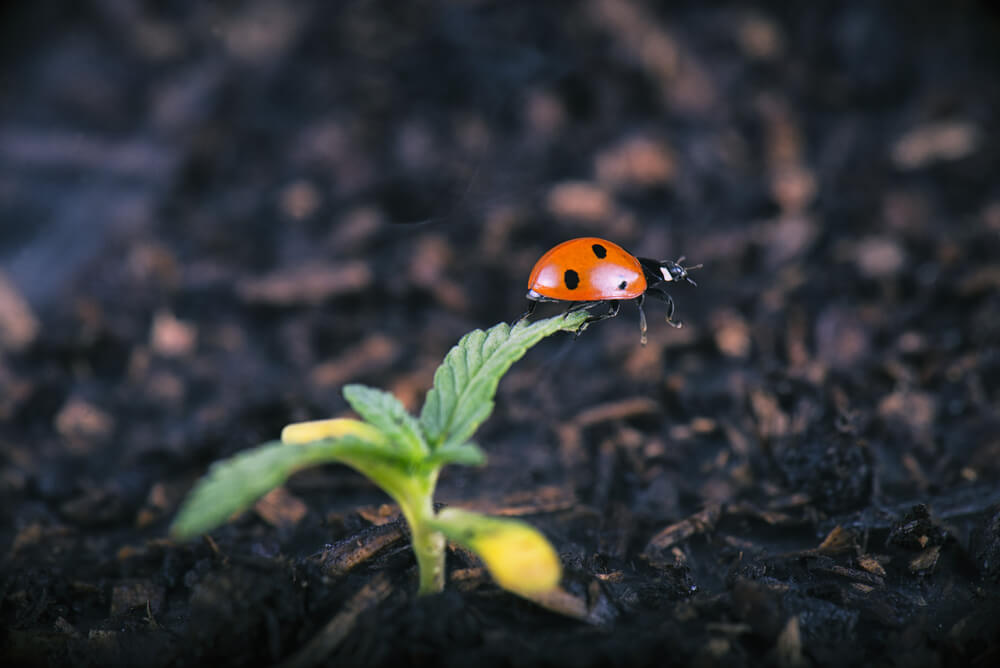
Things are pretty much straightforward for outdoor growers, as they will most probably stick their germinated seeds in special soil mixes. Potting soil is a solid option for indoor growers too, but as we move into more controlled environments, the possibilities widen. There is a surprising number of available methods and growing mediums in which indoor growers can grow their marijuana.
Hydroponic setups are a slightly more complicated, albeit quicker and more efficient way to grow marijuana. The reason for that is simple: In hydroponic systems, the roots are submerged in water, therefore receiving nutrients directly. This energy-saving allows the plant to focus on growth, reducing flowering times. There are many soil-less marijuana growing types. Some of the best known are:
- Deep Water Culture
- Nutrient Film Technique
- Bubbleponics
- Aeroponics
- Ebb & Flow
- Wick
- Drip Irrigation
How Many Growing Stages Are There?
Now that you know all about the factors that can influence marijuana development let’s take a look at the timeline of each growing stage. For the sake of convenience, we added an approximate timeframe in weeks, so that you know what to expect.
Germination (36 hours – 3 Days)
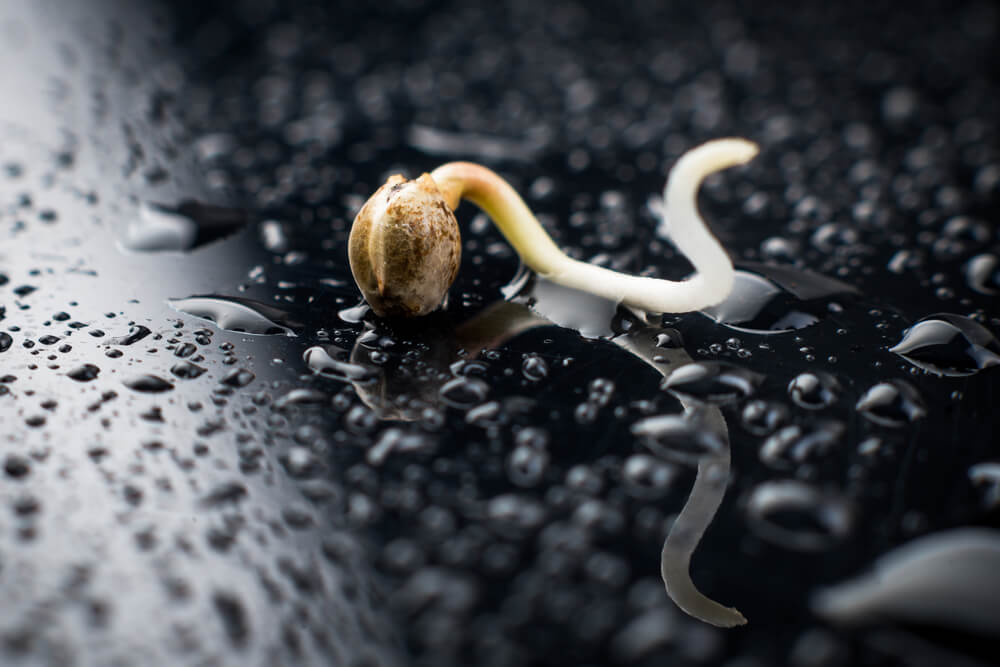
Whatever seeds you choose, it is strongly recommended that you use feminized varieties. Unless you want to breed cannabis, you don’t need male plants, so keep them seeds clearly marked and store them in the fridge until it’s time for germination.
Seeds are also alive in a sense, but they are in a dormant state, waiting for stimulation in order to start developing. This stimulation can come in a variety of techniques, which you can see in more detail here. Cannabis seeds protect the endosperm, the “shoot meristem” (the first hair-like shoot that the plant will produce) and the “root meristem”.
Cutting clones from already developed plants is a good way of increasing grow speed. This technique is safer, as the clone will inherit all the positive traits of the original plant. So, if you have a friend with some amazing weed plants, you are in luck! Meristem cells are the same throughout the plant, meaning that a plant will develop a root system automatically when you cut off a stem and plant it!
Seedling (1 Week – 3 Weeks)
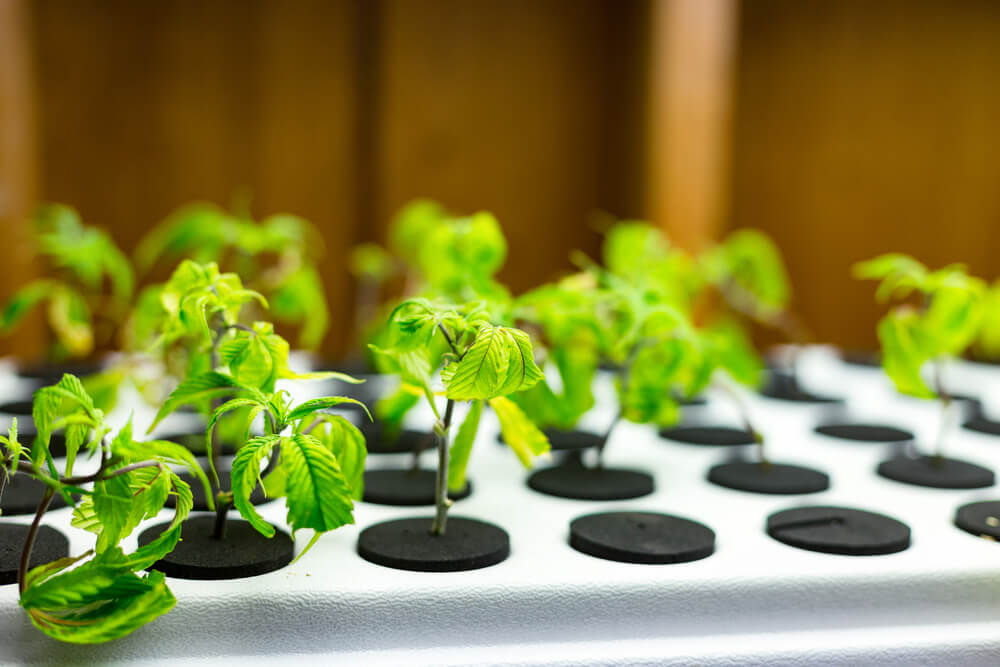
As the root system develops and grows, the plant will start producing chlorophyll and begin the process of photosynthesis. This is why at this point, your plant will grow towards the nearest light source. Go easy on the light intensity, as the plant is still quite frail at this point. If you can, use fluorescent lighting or dimmable LED lights.
Vegetative (4 Weeks – 12 Weeks)
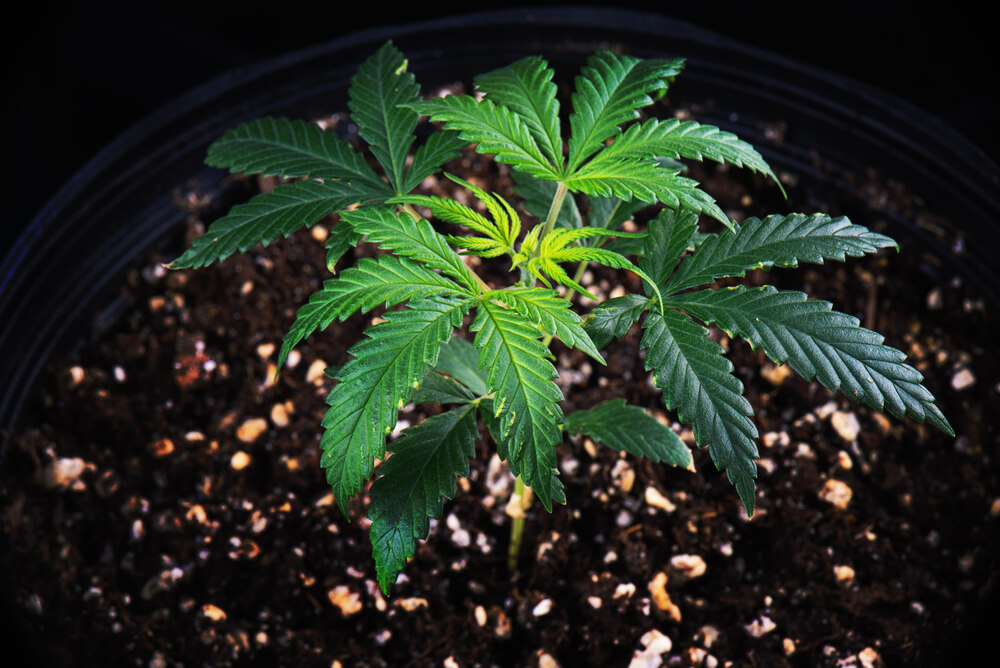
If left untrained, a marijuana plant will start growing in the shape of an xmas tree and reach its maximum height before entering flowering. This is precisely why the vegetative stage is the perfect time to train your plants. There are several methods you can use to toughen up your plants and increase their yields. Some of the most renowned are:
- Low-Stress Training;
- Super Cropping;
- Monster Cropping;
- Screen of Green (SCROG);
- Topping/FIM;
- Sea of Green.
With the exception of LST, all of the other methods will set you back a few days, as the plant will need to recover from the (moderate) damage they will endure. However, the wait is usually well worth it, as it comes with vastly improved yields.
Pre-Flowering (2-3 Weeks)
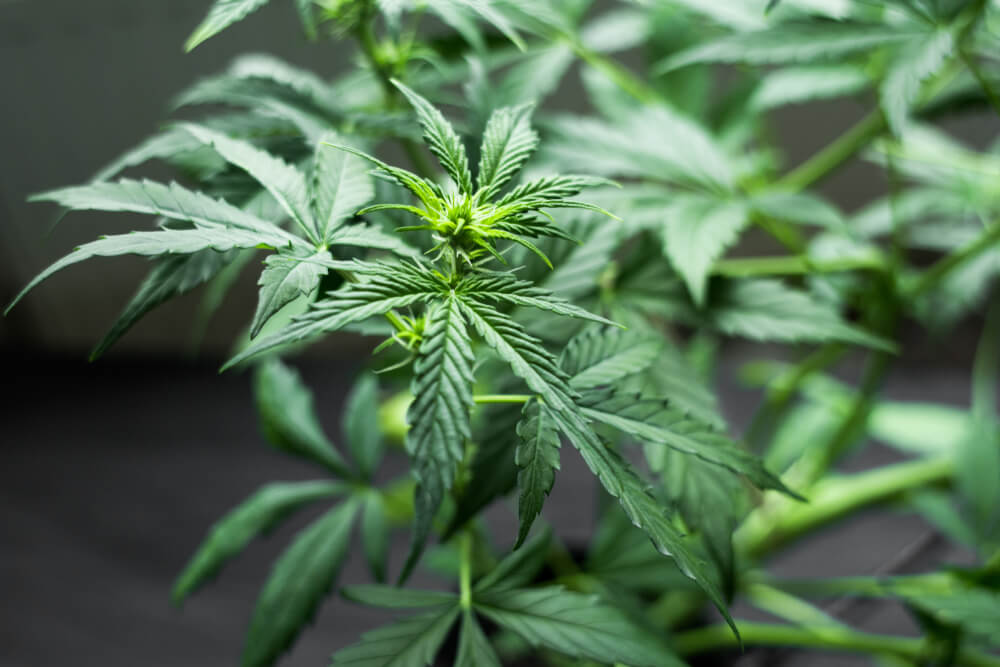
There is not a pre-flowering stage, but it is a widely used term to describe the phase between vegging and flowering. It will happen immediately after you change the light cycle to less than 12 hours of light each day. During this time, the plant will make a final push towards maturity, consuming nutrients like crazy and focusing all of its energy towards creating bud sites.
At this stage, it is normal to notice some yellowing or loss of leaves near the base of the plant. It is also important to check the sex of your plant, as now is when its reproductive organs will appear. Equip yourself with a magnifying glass and observe the growths near the bud sites (pre-flowers) and beneath the leaves.
If you notice green sacks instead of pistils, feel free to take this plant out of the grow room and turn it into tea, compost or ointment. There are many things you can do with a discarded male plant, but smoking it is not an option. Although the pollen included in the sacks is important for reproduction, it will also ruin the yields you have been preparing for so many weeks.
Female pre-flowering plants have a pair of white pistils emerging underneath and around the seed bract of the plant.
If you notice green sacks AND pistils growing on a plant, the same thing still stands: Get it out fast! Hermaphrodite plants are equally dangerous and useless as male plants (at least to non-breeders).
Flowering (4-8 Weeks)
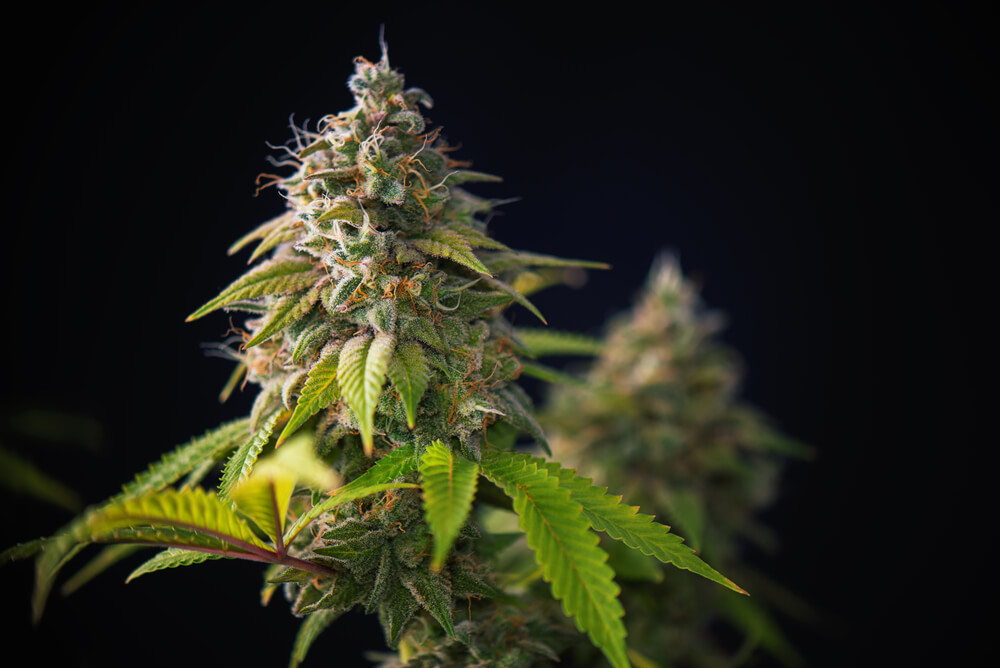
During the main flowering period, marijuana development usually stops and the plant focuses more on creating bud sites and flowers. At this stage, it is best to increase the red and far-red wavelengths of light that your plant receives (if growing indoors). This can be done either by using HPS lights or full spectrum LEDs. This wavelength simulates the natural sunlight during autumn and ensures that the plants get the quality of light they need.
Also, plants in the flowering stage feel more comfortable at slightly lower temperatures (18-25ºC), while relative humidity levels should always stay at around 70% to avoid pest problems. Remember that, during flowering, the dark part of the light cycle should be absolutely dark, meaning your grow room should be absolutely light proof. Use nutrients sparingly, or not at all if you can. Read more about the right time to harvest here!
Drying and Curing (1-2 Weeks)
Harvesting is not the final step before you actually consume your yield. In fact, what follows is even more important, as proper drying and curing of your buds will define their taste and potency. This process will take about two extra weeks, but the results will skyrocket the quality of your marijuana.
The curing process equalizes the moisture levels within the bud with the outside part. You want this to be done gradually and slowly so that absolutely no humidity is trapped inside. To do that, just add your semi-dry buds in air-tight mason jars and seal them. You will notice that condensation will start to form from the inside of the jars. Every time that happens (once-twice a day), open the lid and slightly shake the buds around. In about two weeks, the buds will be evenly dried and ready for consumption!
It’s the Circle of Life, and It Moves Us All!
On average, the time from seed to blunt should last between 10-18 weeks. Some plants will take less, some will take more, but that’s a pretty accurate average. You should keep in mind that after the plants are harvested, they will sadly pass away. Don’t feel bad though! Dead marijuana plants make amazing compost for your future crops and you can even try taking a clone just before your harvest, to start a new garden immediately.

Leave a Reply